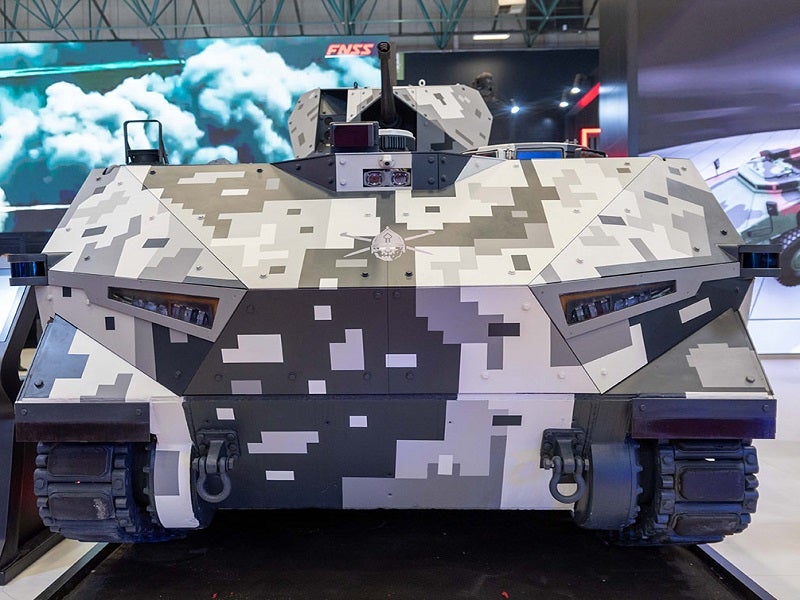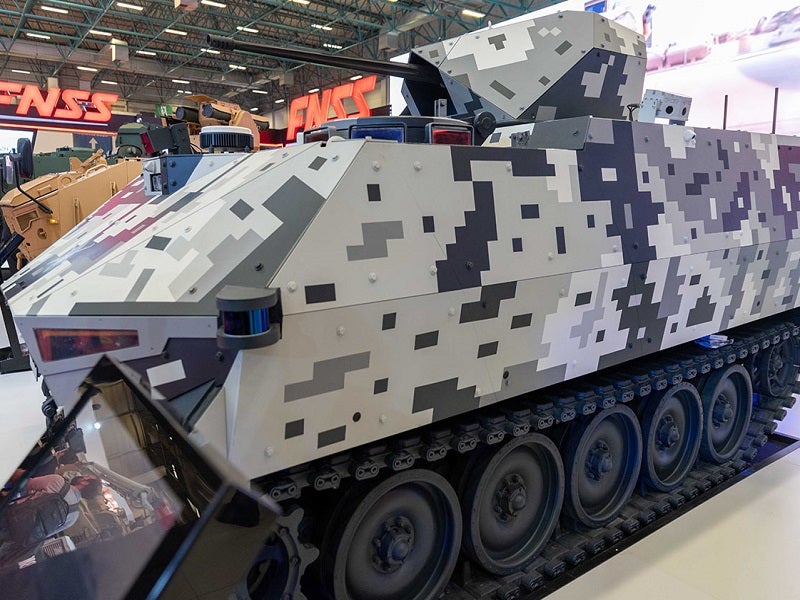Shadow Rider unmanned ground vehicle (UGV) has been designed to serve as a force multiplier on the battlefield. It is manufactured by Turkish armoured vehicles provider FNSS, which is a joint venture (JV) between Turkish industrial conglomerate Nurol and British aerospace and defence firm BAE Systems.
The UGV is equipped with an artificial intelligence (AI)-based autonomy kit, decision support systems, a sensor suit, and systems designed to provide positional and situational awareness.
The UGV concept was demonstrated at the International Defence Industry Fair (IDEF) 2019 held in Istanbul, Turkey, while the prototype vehicle was officially unveiled at the August 2021 edition of the exhibition.
Shadow Rider design and features
The modular design of the vehicle makes it suitable for different missions and operations in difficult conditions and terrains. The architecture also supports the integration of different payloads on the platform to support a range of missions including surveillance and reconnaissance, tactical deception, logistics support, communication relay, fire support, and military evacuation.
The unmanned vehicle is based on the combat-proven M113 personnel carrier. The selection of a proven platform allowed FNSS to spend more time and resources on the research and development of autonomous technologies for the new UGV.
Shadow Rider has a length of less than 5.5m, width of 3m, and combat weight of 13,500kg. The payload carrying capacity of the vehicle is 4,500kg.
The UGV offers high firepower and incorporates a 360° detection system. It features an autonomous control system that meets military standards. It can be operated remotely, autonomously, and alternatively via an optional manned driving capability.
Shadow Rider also provides manned-unmanned systems teaming capabilities in support of wingman operations.
Shadow Rider variants
The Shadow Rider family of vehicles includes five variants, namely Command, Tactical Decoy, Fire Support, Engineering Reconnaissance, and Logistics Support vehicles.
The Fire Support variant, which is an armed vehicle, does not have an autonomous firing capability and allows the gunner to participate in the decision-making process. The combat configuration of the vehicle integrates a 25mm unmanned remote turret.
Autonomous kit on Shadow Rider
The autonomy kit integrated on Shadow Rider is developed by FNSS. It provides various driving modes including patrol, follow the leader, and track and return to the base. It offers multiple layers of protection to ensure safety during operations.
The open architecture of the kit will support the adaptation of future technological upgrades.
Navigation and communications
The Shadow rider is equipped with a state-of-the-art global navigation satellite system (GNSS) with anti-jam sensors that will support electronic warfare (EW). It is also installed with radio frequency (RF) and long-term evolution (LTE) communication systems.
Further, the UGV features waypoint navigation capabilities that enable it to effectively support patrol missions. It also provides leader-follower modes in environments where the GNSS signal is weak or not reachable.
The platform is also equipped with obstacle detection and avoidance capabilities.
Shadow Rider engine and mobility
The Shadow Rider UGV is powered by a diesel engine coupled to a fully automatic transmission with four forward plus one reverse gears.
The unmanned vehicle can achieve a maximum road speed of more than 50km/h and provide a range of more than 450km. It can negotiate a maximum gradient of 60% and slide slopes of up to 30%. The vehicle can cross trenches of up to 160cm and climb obstacles of up to 60cm.
The vehicle is air transportable by military transport aircraft such as Airbus A400M and Lockheed Martin’s C-130 Hercules.






